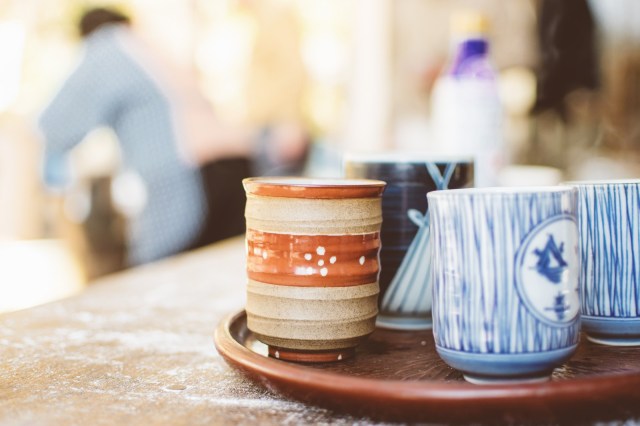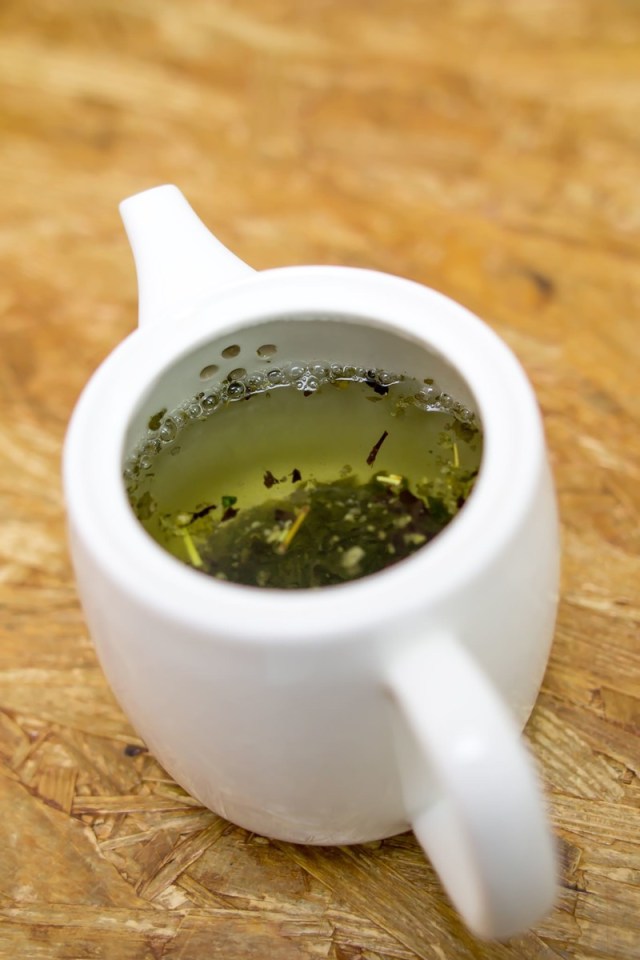
Shizuoka has had a long reign as Japan’s most prolific tea producer–but that reign might be over soon.
Every prefecture of Japan is known for something, whether that’s a particular food, an industry, or a landmark. Shizuoka, located just two hours or so by local train from Tokyo, is known for a few things–gorgeous views of Mt. Fuji, for one–, but its prolific green tea farms are one of the most famous things about it. In fact, this seaside prefecture is widely recognized as “Japan’s Best Tea Producer”.
But they might not hold that title for much longer. Though they’ve been the number-one producer of green tea in the country since 1959, another prefecture might soon be surpassing them, according to data released by the Ministry of Agriculture, Forestry and Fisheries.
The southwestern prefecture of Kagoshima is poised to overtake Shizuoka very soon. Though Shizuoka has maintained its top position for more than 60 years, its unrefined tea production numbers have been on a slow downturn since the 1980s. In the meantime, Kagoshima’s tea production has been increasing quickly since the 2000s and steadily closing the distance on Shizuoka. Last year, Shizuoka produced 25,200 tons of unrefined green tea, or unprocessed tea leaves, making up 34 percent of the total domestic production. Kagoshima produced 23,900 tons, a difference of less than 2,000 tons. That number is remarkable, given that Kagoshima started out with growing only about 2,700 tons of tea in 1959.
The Ministry believes that Kagoshima’s success is due to the fact that they’ve introduced far more mechanization to their harvesting process. Kagoshima’s tea farms, which focus on cultivating tea for bottled drinks, only span 7,970 hectares, compared to Shizuoka’s 13,700, and yet they have managed to produce nearly as much tea as Shizuoka because 97.5 percent of Kagoshima’s tea farms have been making use of human-operated harvesting machines. In Shizuoka, where tea for steeping in hot water is often cultivated on steeper mountain slopes, only 65.8 percent of farms use machinery.
Neither prefecture is interested in production levels alone, though. Some Shizuoka farmers question whether it’s necessary to emphasize production numbers at all, and that producing delicious, quality tea that consumers want to drink is more important.
For Kagoshima, too, surpassing Shizuoka as the top unrefined tea producer is less important than contributing to the recovery of the industry as a whole in the wake of the pandemic, which has caused the demand for tea in both bottled and raw form to drop. “Even if we surpass Shizuoka, since the industry is in a difficult state, we can’t really celebrate,” said one member of the industry. “I’d rather we work together with Shizuoka to spread the popularity of tea all throughout Japan.”
Green tea has a long history in Japan, and drinking tea is a very important part of Japanese culture, so it would be a terrible shame if tea producers were forced to close down for good because of the pandemic. Why not help keep the industry alive by drinking all of the green tea drinks and eating all of the green tea dishes, snacks, and sweets that you can get your hands on? We’ll be sure to keep you updated on all the tasty new treats as they come out!
Source: Yomiuri Shimbun via Yahoo! News via Otacom
Top image: Pakutaso
Insert images: Pakutaso (1, 2, 3, 4)
● Want to hear about SoraNews24’s latest articles as soon as they’re published? Follow us on Facebook and Twitter!





 Drink Green! We check out the amazing “Green Tea Party” presented by Isetan and Ito En! 【Pics】
Drink Green! We check out the amazing “Green Tea Party” presented by Isetan and Ito En! 【Pics】 Stylish green tea “chablets” from Shizuoka are our new way favorite way to grab a cuppa
Stylish green tea “chablets” from Shizuoka are our new way favorite way to grab a cuppa Japan’s massive matcha parfait weighs 6 kilos, contains hidden surprises for anyone who eats it
Japan’s massive matcha parfait weighs 6 kilos, contains hidden surprises for anyone who eats it Liquid wasabi from Shizuoka is our new favorite form of awesome sauce
Liquid wasabi from Shizuoka is our new favorite form of awesome sauce We spill the tea–a guide to all of Japan’s Gogo no Kocha Milk Teas sold in the wintertime
We spill the tea–a guide to all of Japan’s Gogo no Kocha Milk Teas sold in the wintertime Japan’s new difficult-to-drink-from beer glass protects your liver, but it’s a brutal experience
Japan’s new difficult-to-drink-from beer glass protects your liver, but it’s a brutal experience Demon Slayer: Kimetsu no Yaiba gets new roller coaster attractions and food at Universal Studios Japan
Demon Slayer: Kimetsu no Yaiba gets new roller coaster attractions and food at Universal Studios Japan How to order snacks on a Shinkansen bullet train in Japan
How to order snacks on a Shinkansen bullet train in Japan Burger King Japan suddenly adds Dr. Pepper and Dr. Pepper floats to its menu nationwide
Burger King Japan suddenly adds Dr. Pepper and Dr. Pepper floats to its menu nationwide New Pokémon ice cream, dessert drinks, and cool merch coming to Baskin-Robbins Japan【Pics】
New Pokémon ice cream, dessert drinks, and cool merch coming to Baskin-Robbins Japan【Pics】 Caffeinated ramen for gamers that you can eat with one hand going on sale in Japan
Caffeinated ramen for gamers that you can eat with one hand going on sale in Japan New samurai glasses are Japan’s latest weird must-have souvenir
New samurai glasses are Japan’s latest weird must-have souvenir McDonald’s adds new watermelon frappe and fruity macaron to its menu in Japan
McDonald’s adds new watermelon frappe and fruity macaron to its menu in Japan Princesses, fruits, and blacksmiths: Study reveals the 30 most unusual family names in Japan
Princesses, fruits, and blacksmiths: Study reveals the 30 most unusual family names in Japan We check out the local flavors of the commonly confused Ome and Aomi areas of Tokyo in one day
We check out the local flavors of the commonly confused Ome and Aomi areas of Tokyo in one day Nintendo history you can feel – Super NES, N64, and GameCube controllers become capsule toys
Nintendo history you can feel – Super NES, N64, and GameCube controllers become capsule toys Hello, cosmetics! Clinique teams up with Hello Kitty this summer for first-time collaboration
Hello, cosmetics! Clinique teams up with Hello Kitty this summer for first-time collaboration “The most Delicious Cup Noodle in history” – Japan’s French Cup Noodle wins our heart【Taste test】
“The most Delicious Cup Noodle in history” – Japan’s French Cup Noodle wins our heart【Taste test】 Starbucks releases a cute Frappuccino and Unicorn Cake…but not in Japan
Starbucks releases a cute Frappuccino and Unicorn Cake…but not in Japan Kyoto Tower mascot termination reveals dark side behind cute Japanese characters
Kyoto Tower mascot termination reveals dark side behind cute Japanese characters McDonald’s Japan’s Soft Twist Tower: A phantom ice cream only sold at select branches
McDonald’s Japan’s Soft Twist Tower: A phantom ice cream only sold at select branches Yabai Ramen: What makes this Japanese ramen so dangerous?
Yabai Ramen: What makes this Japanese ramen so dangerous? Finally! Nintendo Japan expands Switch 8-bit controller sales to everybody, Online member or not
Finally! Nintendo Japan expands Switch 8-bit controller sales to everybody, Online member or not Japanese government wants to build luxury resorts in all national parks for foreign tourists
Japanese government wants to build luxury resorts in all national parks for foreign tourists To combat declining birth rate, Japan to begin offering “Breeding Visas” to foreigners
To combat declining birth rate, Japan to begin offering “Breeding Visas” to foreigners 10 things you should buy at 7-Eleven in Japan
10 things you should buy at 7-Eleven in Japan Studio Ghibli releases anime heroine cosplay dresses that are super comfy to wear
Studio Ghibli releases anime heroine cosplay dresses that are super comfy to wear Woman charged for driving suitcase without a license in Osaka
Woman charged for driving suitcase without a license in Osaka Studio Ghibli unveils My Neighbour Totoro miniature house model
Studio Ghibli unveils My Neighbour Totoro miniature house model Kyoto experiencing problems with foreign tourists not paying for bus fares, but not on purpose
Kyoto experiencing problems with foreign tourists not paying for bus fares, but not on purpose Fighting mild hunger with a Japanese soda that turns into jelly in the stomach【Taste test】
Fighting mild hunger with a Japanese soda that turns into jelly in the stomach【Taste test】 Studio Ghibli’s Howl’s Moving Castle tapestry unveiled in Japan for first time
Studio Ghibli’s Howl’s Moving Castle tapestry unveiled in Japan for first time McDonald’s new Happy Meals offer up cute and practical Sanrio lifestyle goods
McDonald’s new Happy Meals offer up cute and practical Sanrio lifestyle goods Sales of Japan’s most convenient train ticket/shopping payment cards suspended indefinitely
Sales of Japan’s most convenient train ticket/shopping payment cards suspended indefinitely Sold-out Studio Ghibli desktop humidifiers are back so Totoro can help you through the dry season
Sold-out Studio Ghibli desktop humidifiers are back so Totoro can help you through the dry season Japanese government to make first change to romanization spelling rules since the 1950s
Japanese government to make first change to romanization spelling rules since the 1950s Foreigner’s request for help in Tokyo makes us sad for the state of society
Foreigner’s request for help in Tokyo makes us sad for the state of society Ghibli founders Toshio Suzuki and Hayao Miyazaki contribute to Japanese whisky Totoro label design
Ghibli founders Toshio Suzuki and Hayao Miyazaki contribute to Japanese whisky Totoro label design Doraemon found buried at sea as scene from 1993 anime becomes real life【Photos】
Doraemon found buried at sea as scene from 1993 anime becomes real life【Photos】 Tokyo’s most famous Starbucks is closed
Tokyo’s most famous Starbucks is closed Nara University study finds some common teas can neutralize COVID-19
Nara University study finds some common teas can neutralize COVID-19 Starbucks releases special matcha Frappuccino made with Japan’s first matcha leaves of the year
Starbucks releases special matcha Frappuccino made with Japan’s first matcha leaves of the year We try super rare Shizuoka food souvenirs in the form of blue gelato and purple baumkuchen
We try super rare Shizuoka food souvenirs in the form of blue gelato and purple baumkuchen Kyoto tea store collaborates with local winemaker to create deliciously green matcha white wine
Kyoto tea store collaborates with local winemaker to create deliciously green matcha white wine Matcha cake from one of Japan’s top tea towns has a one-month wait, but is it worth it?【Taste test】
Matcha cake from one of Japan’s top tea towns has a one-month wait, but is it worth it?【Taste test】 Häagen-Dazs Japan’s Yuzu Green Tea Float — How to make the super-easy matcha summer dessert drink
Häagen-Dazs Japan’s Yuzu Green Tea Float — How to make the super-easy matcha summer dessert drink Red Matcha: A new type of Japanese powdered tea years in the making
Red Matcha: A new type of Japanese powdered tea years in the making McDonald’s Japan releases matcha green tea cake, frappes and lattes for a limited time
McDonald’s Japan releases matcha green tea cake, frappes and lattes for a limited time Suntory attempts to mess with our brains again with new milk-tea-flavored bottled water
Suntory attempts to mess with our brains again with new milk-tea-flavored bottled water Starbucks Japan creates a green tea slushie with sencha, apple, perilla and sansho pepper
Starbucks Japan creates a green tea slushie with sencha, apple, perilla and sansho pepper Adorable mascot bear Kumamon stars on the most popular new license plate in Japan
Adorable mascot bear Kumamon stars on the most popular new license plate in Japan Experience afternoon tea with a Japanese twist in Harajuku!【Photos】
Experience afternoon tea with a Japanese twist in Harajuku!【Photos】 Scalding your subordinate with tofu – definitely not proper police procedure
Scalding your subordinate with tofu – definitely not proper police procedure Japanese breast size study shows rapid growth in previously smallest-busted region of county
Japanese breast size study shows rapid growth in previously smallest-busted region of county Sharp’s Ocha-presso brings traditional Japanese flavor to your kitchen
Sharp’s Ocha-presso brings traditional Japanese flavor to your kitchen
Leave a Reply